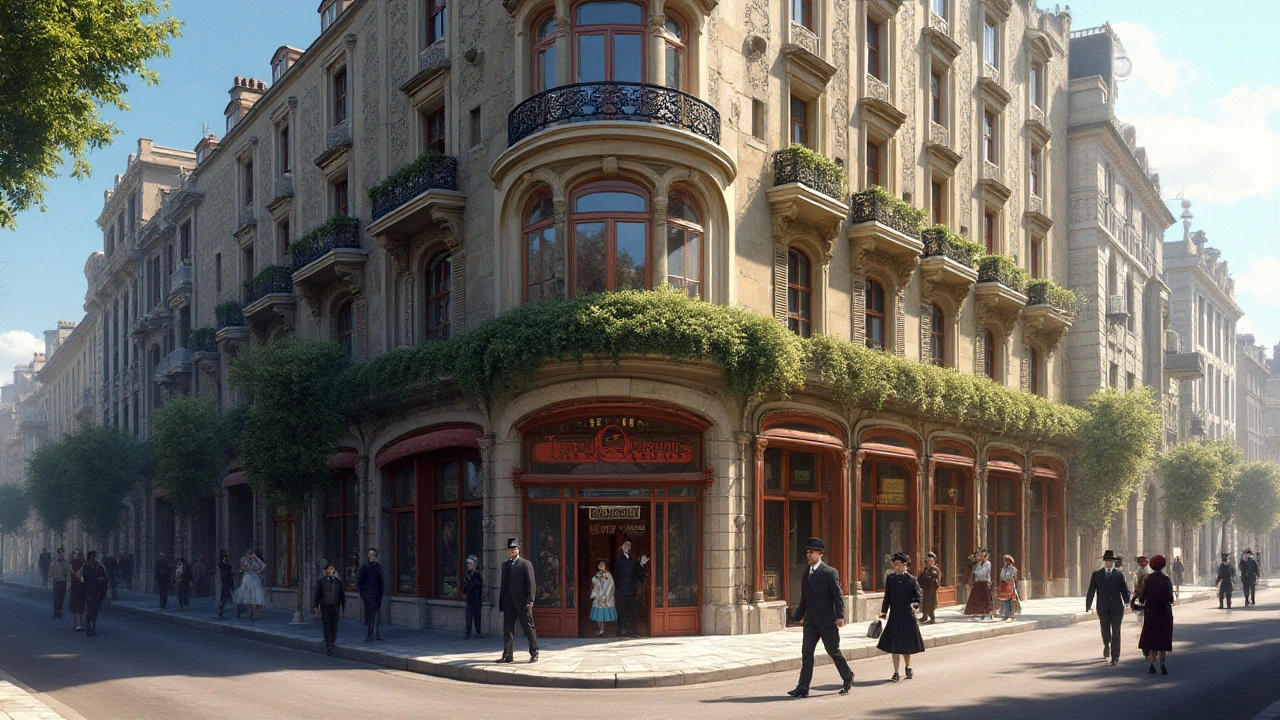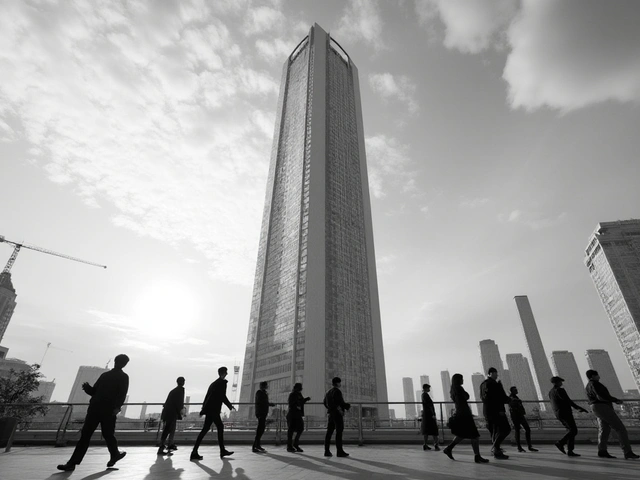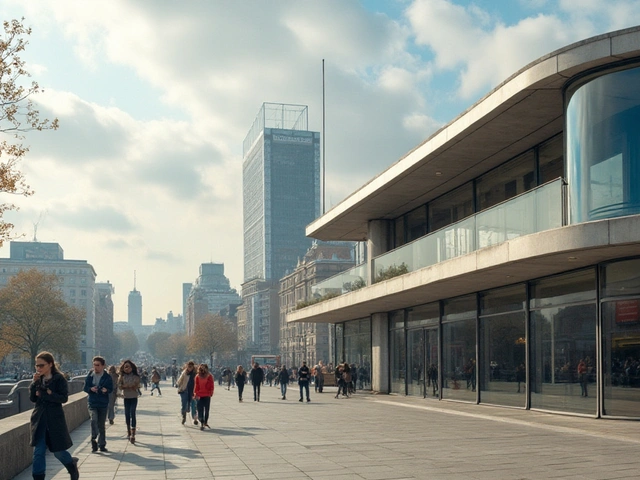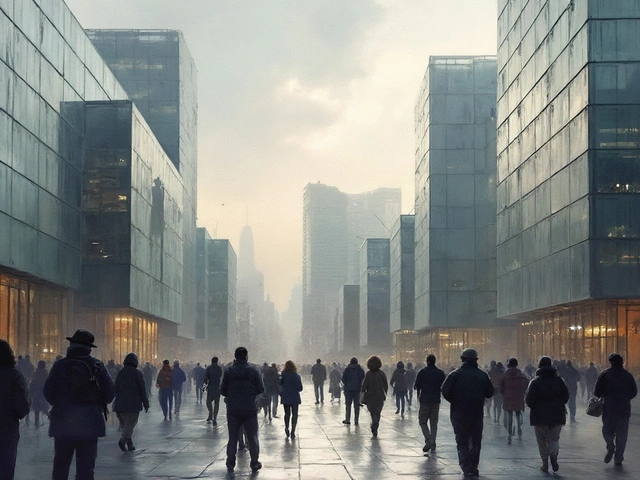Art Nouveau architecture, a captivating movement that came to life at the dawn of the 20th century, offered a fresh perspective on building design. With its roots deeply embedded in the natural world, the style celebrated organic forms, creating structures that appeared to grow naturally from their settings.
The movement, found predominantly in Europe, was an artistic rebellion against the revival styles that dominated the era. Architects sought to combine functionality with an aesthetic appeal, resulting in buildings that were not just structures but works of art. Buildings often featured intricate ironwork and ceramics intertwining with decorative elements inspired by flora and fauna.
This architectural approach resonated with a growing desire for personal expression and a break from the past. Today, many of these historical gems stand as a testament to an era that dared to dream differently, influencing modern designs and continuing to inspire architects worldwide.
- The Origins of Art Nouveau
- Key Characteristics of the Style
- Notable Art Nouveau Architects
- Famous Art Nouveau Buildings
- The Influence of Nature on Design
- Art Nouveau in Modern Times
The Origins of Art Nouveau
In the late 19th century, a fresh movement began to take shape in response to the rigid practices that had dominated the art and architectural scenes for decades. This movement, known as Art Nouveau, found its beginnings as artists and architects started seeking inspiration from the natural world rather than adhering strictly to historical styles. They wanted more than the repetition and embellishments seen in neoclassical or gothic revivals. Art Nouveau, with its distinctive flowing lines and organic forms, became a way to break free from the constraints of traditional design.
The roots of Art Nouveau can be traced back to various parts of Europe, particularly Belgium and France, where pioneers like Victor Horta and Hector Guimard began experimenting with new forms and materials. These innovators were influenced by the Arts and Crafts Movement, which advocated for handcraftsmanship and the beauty of nature in art. Just as important was the impact of the burgeoning Industrial Revolution, which provided new materials such as iron and glass, allowing for the creation of intricate, delicate components that became hallmarks of the style.
Interestingly, the movement also drew from Japanese art, which was becoming increasingly popular in Europe at the time. Japanese woodblock prints, with their elegant curves and emphasis on the beauty of nature, resonated with Art Nouveau artists.
Oscar Wilde once remarked, 'One should either be a work of art, or wear a work of art,' capturing the essence of the movement's desire to intertwine art seamlessly with daily life.Artists and architects of the age were determined to create not just buildings, but rather complete works of art that encapsulated this philosophy.
This international flair extended beyond French and Belgian borders, taking on unique expressions across different regions. In Spain, Antoni Gaudí brought a distinctive Catalan flourish with his imaginative and unconventional structures, while in Austria, the movement was associated with the vibrant stylistic expressions of the Vienna Secession. The Ornamental Movement, or Jugendstil as it was known in Germany, focused heavily on decorative elements, which resonated in the jewelry, furniture, and glassworks of the era. Each region added its unique flavor, contributing to a rich tapestry of Art Nouveau designs that can still be seen today.
The diverse materials used in Art Nouveau architecture enabled artists to explore a range of textures and effects. Ironwork allowed for intricate detailing, often mimicking vines or waves. Glass, on the other hand, offered vibrant stained-glass windows and decorative panels that both illuminated and adorned interiors. This interplay of elements defined Art Nouveau's ambition, blending the aesthetic with the practical in ways that were both visually stunning and pioneering for the period.
Key Characteristics of the Style
Art Nouveau architecture stands out with its unique blend of artistry and practicality, marking a departure from the rigid structures of the past. One of the most evident features is its organic forms that embrace curves and fluid lines, drawing inspiration from plants and flowers. This was a deliberate choice by architects to harmonize the buildings with nature's innate beauty. The design philosophy was not just about aesthetics; it was an attempt to create environments that felt alive and vibrant. Materials like iron, glass, and ceramic tiles were often used to enhance this naturalistic feel, allowing for intricate details that mimicked tendrils and vines.
Another hallmark of Art Nouveau is its extensive use of ornamentation. Facades and interiors often display elaborate decorative motifs, ranging from floral patterns to more abstract designs. These were not merely decorative trappings; they were integral to the architecture itself, shaping window frames, entryways, and roofs. This focus on detail required a collaboration between architects, craftsmen, and artists, leading to bespoke creations that were as much about craftsmanship as they were about architecture. Each building became a canvas for creativity, blurring the lines between fine art and functional structures.
Within Art Nouveau, there's a profound expression of the artistic movement that was sweeping the world at the time. Architects like Victor Horta and Antoni Gaudí became masters of this style, pushing boundaries with designs that were both daring and beautifully ornate. Horta’s Hôtel Tassel in Brussels is a perfect example, with its swirling lines and dynamic forms that seem to defy gravity. Gaudí's work in Barcelona, especially the famous Sagrada Família and Casa Batlló, showcases how deeply art and architecture can intertwine, creating spaces that are simultaneously functional and fantastical. Such structures illustrate how the Art Nouveau style was not just about beauty, but also about innovation and pushing the limits of traditional architecture.
In the realm of color and light, Art Nouveau buildings also make a strong statement. Stained glass windows are a common feature, playing with hues and light to create ambient interiors that change as the day progresses. This use of light as a design element imbues spaces with a magical quality, making them feel larger and more welcoming. Coupled with asymmetrical shapes and bold color palettes, the architecture achieves a sense of balance and harmony that was revolutionary at the time. As Jules Lavirotte once said in reference to these achievements, "Architecture should speak of its time and place, but yearn for timelessness."
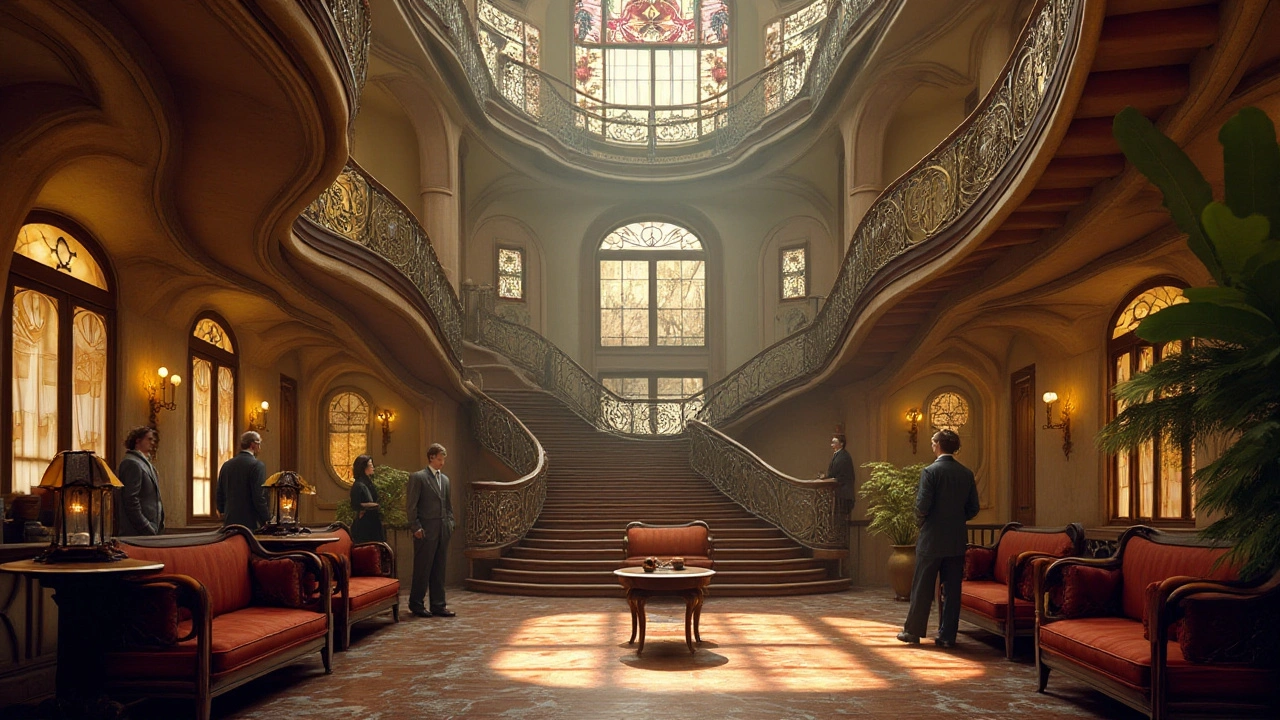
Notable Art Nouveau Architects
Art Nouveau, with its rich tapestry of intricate designs and flowing forms, was birthed and nurtured by a group of visionary architects who sought to redefine the space around us. Chief among them was Antoni Gaudí, whose architectural works have become synonymous with the movement. Gaudí's style, especially evident in his masterpiece, the Sagrada Família in Barcelona, embodies the organic ethos of Art Nouveau. It's a symphony of colors, forms, and structures, blending the divine with the natural world.
Another icon of the Art Nouveau architecture world was Hector Guimard. A French architect, Guimard is perhaps best known for designing the entrances to the Paris Métro. These iron and glass structures, with their vine-like ornamentation, echo the fluidity of natural forms and stand as enduring symbols of the Art Nouveau epoch. Guimard's work was characterized by his belief that nature should be the primary source of inspiration for architecture.
In Austria, the architect Otto Wagner made significant strides within the movement. A key figure in the Vienna Secession, Wagner’s buildings, such as the Austrian Postal Savings Bank, emphasized clean lines and functional elegance with Art Nouveau embellishments. Wagner was quoted as saying, "Something impractical cannot be beautiful." This philosophy is evident in his approach that married practicality with ornamental design.
Charles Rennie Mackintosh, from Scotland, also contributed significantly to the Art Nouveau style, leaving an indelible mark on architectural design. Known for his work on the Glasgow School of Art, Mackintosh’s designs incorporated a distinctive marriage of linear elegance and floral motifs, demonstrating the diverse interpretations of the Art Nouveau style across different cultures. His architecture embraced light and space, offering a fresh perspective on building interiors.
Belgium also played a prominent role in the development of the style, with Victor Horta leading the charge. Horta's works, such as Hôtel Tassel in Brussels, are considered some of the first true examples of Art Nouveau in architecture. His innovative use of materials and incorporation of free-flowing lines pioneered a new architectural freedom, influencing countless architects in the coming decades.
These architects were more than just builders – they were poets of stone and steel, each crafting their architectural sonnets that continue to captivate and inspire. The legacy of these Art Nouveau pioneers is not just seen in the surviving structures of the early 20th century but in the modern architectural landscape that still echoes their revolutionary vision. Their work wasn’t just about style – it was about expressing a philosophy that celebrated beauty, design, and nature in harmony.
Famous Art Nouveau Buildings
Art Nouveau left an indelible mark on architecture with its breathtaking designs that pepper the globe, each telling its unique story. One of the most celebrated is the Sagrada Família in Barcelona, designed by the legendary Antoni Gaudí. Although commonly associated with the Catalan Modernisme movement, which overlaps with Art Nouveau, Gaudí's work epitomizes the period's blend of structure and nature. The Sagrada Família, with its soaring spires and organic forms, reflects a profound respect for the natural world, drawing lines between architecture and spirituality.
In Belgium, Victor Horta's influence can be seen in structures such as the Hôtel Tassel in Brussels. Often regarded as one of the first true Art Nouveau buildings, it brilliantly showcases the use of wrought iron and glass to create light-filled spaces that blur the lines between interior and exterior. Horta's eloquent design principles are evident throughout the building, making it a masterpiece of symmetry and beauty. As a testament to its significance, the Hôtel Tassel is inscribed on the UNESCO World Heritage List, cementing its place in architectural history.
A trip to Paris wouldn't be complete without admiring the entrance to the Paris Métro by Hector Guimard. These gateways, with their sinuous forms and vibrant colors, serve as daily reminders of the Art Nouveau movement's impact on urban landscapes. Guimard's use of organic shapes was revolutionary, setting a new standard for transport design by turning functional structures into delightful artworks. These entrances remain iconic symbols of Paris's urban identity, capturing the spirit of innovation that defined the era.
Another noteworthy example is the Majolikahaus in Vienna, designed by Otto Wagner. This striking building features a facade covered with colorful ceramic tiles, evoking the blooming vines of nature. Wagner's emphasis on function married with form became a key principle of Art Nouveau, reflected in his belief that structures should not only serve practical purposes but also provide aesthetic pleasure. His work illustrated a harmonious coexistence of art and architecture, making the Majolikahaus a sight to behold.
Art Nouveau's reach extended beyond Europe, influencing buildings like the Casa Batlló in Barcelona, one of Gaudí's most eccentric creations. Sometimes referred to as the "House of Bones," it features a skeletal structure and vivid marine colors that emulate the undersea world. Its unique design makes it stand out even in a city full of architectural wonders. The visual storytelling embodied in Casa Batlló highlights the freedom and creativity that Art Nouveau afforded its architects.
Exploring these famous Art Nouveau buildings offers a window into an era that cherished the beauty of organic forms and innovative structures. The enduring legacy of these architectural gems continues to inspire awe, showcasing the unparalleled creativity that defined the Art Nouveau movement and leaving a rich cultural tapestry that speaks to the timeless allure of harmonious design.
"The purpose of architecture is to shelter and enhance man's life on earth and to fulfill his belief in the nobility of his existence," said architect Eero Saarinen, capturing the spirit behind these Art Nouveau masterpieces.
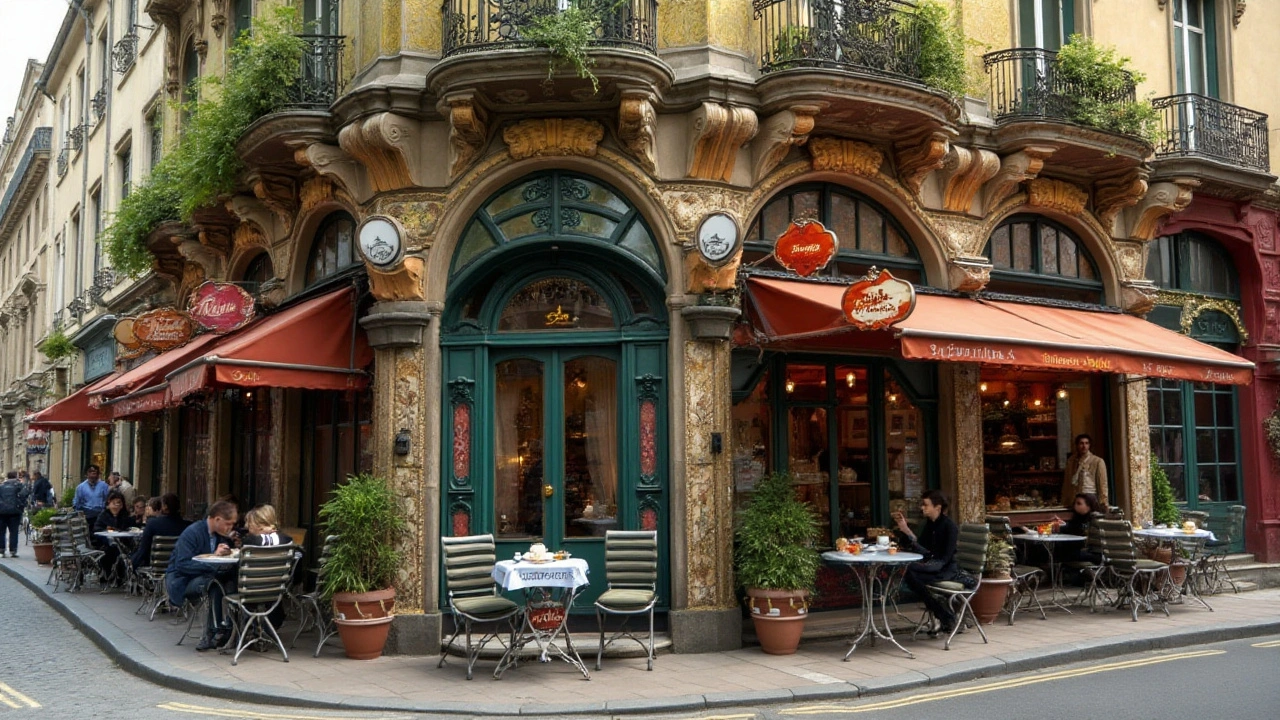
The Influence of Nature on Design
The remarkable enchantment of Art Nouveau architecture largely stems from its celebration of nature's beauty and complexity. As architects sought to create designs contrasting the rigid structures that preceded this era, they turned to the organic forms and delicate intricacies found naturally in the environment. These architects often mirrored the gentle curves of plants, the intricate patterns of leaves, and the fluidity of flowers, seamlessly incorporating these elements into their architectural blueprints.
At its heart, the Art Nouveau movement embraced an ethos that viewed buildings as living, breathing entities. This philosophy is evident in detailed facades adorned with swirls of vines and flowers, extending a sense of harmony with the earth. Architects like Antoni Gaudí took this approach to another level with works such as the iconic Casa Batlló in Barcelona, where the building appears as though it is alive, with its vibrant colors and swooping forms reminiscent of coral reefs and skeletal remains of prehistoric creatures.
Integration of Natural Elements
Natural motifs were not limited to the exteriors of Art Nouveau buildings. Inside, the organic and flowing lines often continued in furniture and decorative arts, offering a cohesive and immersive experience. For instance, the swirling ironwork and stained glass of Louis Comfort Tiffany brought a distinct vibrancy and botanical flair to interiors, blending home design with the natural world in a way that had never been done before. This artists' ability to bridge the indoors with the outdoors offered a timeless breath of nature, a sanctuary within the urban sprawl.
"Nature is my inspiration; I cannot look at a broad branch, bending in the wind, without seeing a splendid construction that must be composed of intricate components." — Louis Sullivan, often referred to as the 'father of skyscrapers,' expressed this sentiment, revealing how deeply rooted nature was in his design ideology.
Through the lens of architecture and design from this era, we can clearly see how Art Nouveau experts endeavored to create a cohesive unity between humanity and the ecological wonders that surround us. The harmonious balance achieved in their works inspired a move towards sustainable practices in modern architecture, where the blend of technique and natural influence continues to shape building methodologies worldwide. This sustainable inclination is prominently evident in regions where environmental integration in urban planning has become vital. Embracing these elements remains a cornerstone of modern ambitious projects, continuing the Art Nouveau legacy of intertwining nature with the manmade.
Art Nouveau in Modern Times
The swirling elegance of Art Nouveau continues to mesmerize architects and designers today. This historic style, once a rebellion against the industrial drabness of the 19th century, has found new life in the modern architectural landscape. Its influence is unmistakable in the creative details of contemporary architecture, where the love for natural forms and intricate patterns creates unique and captivating spaces. Far from being a forgotten relic, Art Nouveau's principles often inspire a refreshing departure from stark minimalism, shaping a niche in today's world that values both aesthetic beauty and functional form.
In our fast-paced world, there's an undeniable appeal in the intricate and decorative aspects of this style. Designers seeking to break from the monotony of glass and steel often incorporate Art Nouveau elements in both modern facades and interiors. This trend is particularly visible in cities like Barcelona and Paris, where architects cleverly blend old and new world charm, ensuring that Art Nouveau's legacy remains visible. Buildings adorned with modern interpretations of curvilinear forms and organic motifs remind us of the style's enduring appeal. Such designs not only capture the eye but also evoke a sense of nostalgia while fostering innovation.
Museums and exhibitions devoted to the Art Nouveau era continue to draw crowds, underscoring a growing interest in this captivating style. Contemporary artists and architects often reflect on Art Nouveau's legacy, embracing its emphasis on nature and craftsmanship. With technology enabling new materials and methods, architects can explore even more imaginative avenues, channeling Art Nouveau's spirit in unexpected ways. In fact, some eco-conscious designers find inspiration in Art Nouveau's sustainable ethos, favoring its harmonization with natural environments. As eco-design trends bring nature into urban settings, Art Nouveau's timeless charm remains relevant and inspiring for those committed to design with purpose.
In a 2021 interview with Architectural Digest, renowned designer Philippe Starck remarked,
"Art Nouveau is more than just an architectural style; it's a philosophy that celebrates beauty and creativity, demonstrating how the past can inspire stunning modern designs."Such sentiments echo through various creative industries, where the whimsical and organic approach of Art Nouveau serves as a refreshing muse. Its aesthetics can be found influencing everything from graphic design and fashion to product design, making it obvious that the movement's principles continue to echo across different creative fields. This blend of aesthetic beauty and practicality challenges the conventions of modern design, reminding us that functional art can resonate on a deeply personal level.
The resurgence of interest in Art Nouveau also spurs educational endeavors. Workshops, courses, and seminars on the movement's techniques inspire new generations to appreciate its artistic value. Aspiring architects often dissect iconic Art Nouveau works to understand the fluid sophistication of the past while innovating for the future. Study trips to European cities famous for their Art Nouveau treasures provide students with firsthand inspiration, igniting their creativity. Some universities have even launched dedicated programs exploring the craftsmanship and techniques that define Art Nouveau, ensuring that the appreciation for this unique style endures through thoughtful education.
Ultimately, the impact of Art Nouveau in modern times serves as a reminder of how past movements shape future possibilities. This convergence of history and contemporary design culture underlines the enduring allure of Art Nouveau, reaffirming its timelessness and relevance. As society increasingly looks to blend technology with nature and artistry, Art Nouveau shines as an exemplar of achieving harmony between form and function. Its continued integration into modern designs shows its potential to inspire beauty, not just as an homage to a bygone era, but as an essential component of today's architectural innovations.

